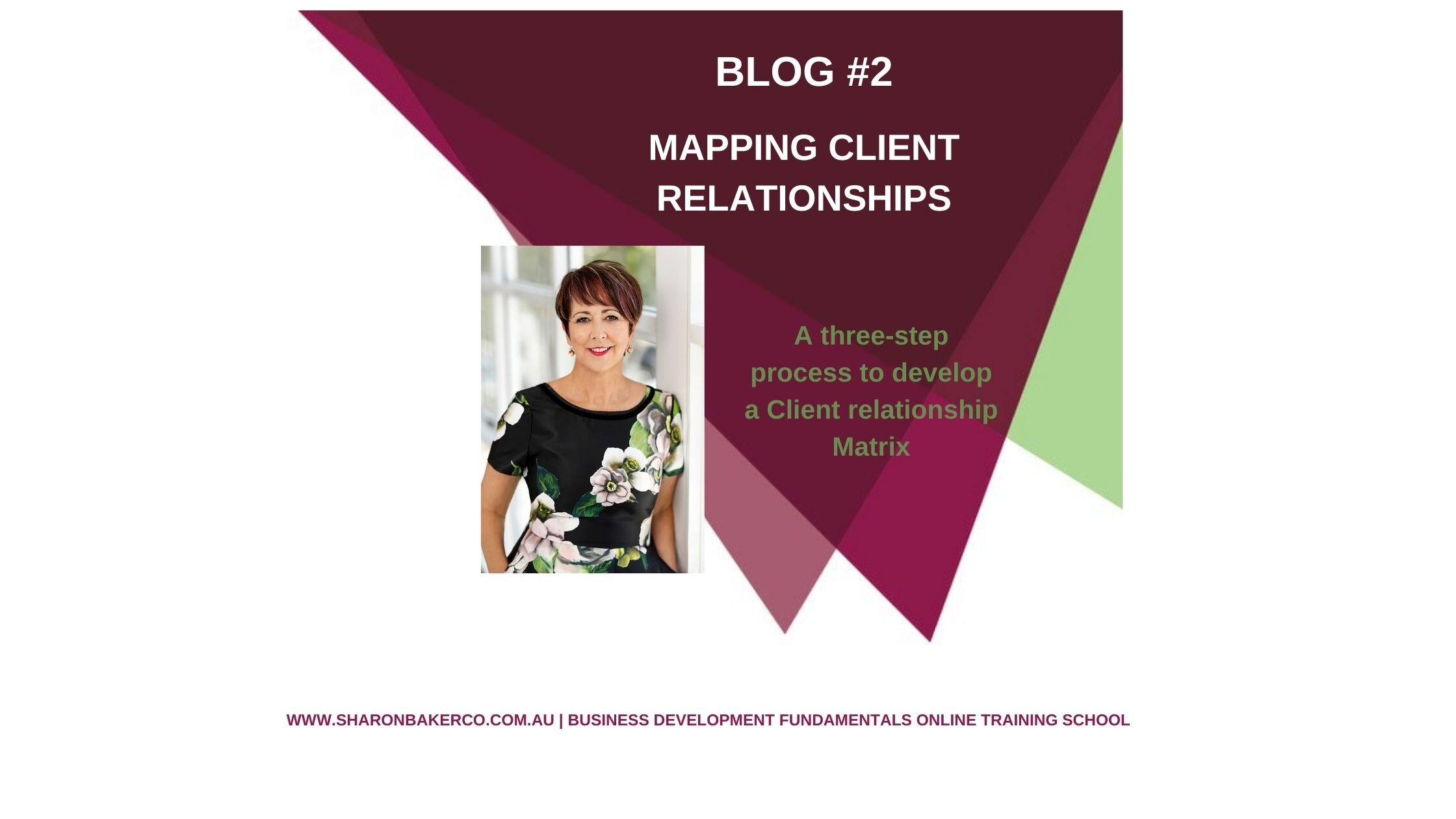BLOG #2 - MAPPING CLIENT RELATIONSHIPS
WHY MAP CLIENT RELATIONSHIPS?
As a business development specialist, I have found the Client Relationship Matrix to be a valuable tool. It helps to clarify the relationships you have within the client organisation and recognise the breadth and depth of connections across the clients' business. It also highlights the relationships that you could be developing to increase your business.
My name is Sharon Baker, and I have over 20 years of experience in business development. I work with clients and their teams to grow their sales and secure their revenue.
So, a client relationship matrix. There are three critical steps to developing this useful tool. They include research your client's organisational structure; capture all the existing relationships from your colleagues; come up with a client communications plan.
A CLIENT RELATIONSHIP MATRIX
First Step
First, to research your client's organisation. The best place to start is their website. Client websites are a wealth of information, and you will find that they have the members of their Board and their Executive Team listed there.
To gather this information together, set up a basic spreadsheet with headings as per the diagram below. It is not too high tech, but it is functional as a tool.
Now populate the first column, Business Streams, with each of the Board members and the Executive Team's names and roles.
The next type of information to capture for this column is the business streams managed by each executive team member.
There are several traditional roles, including the chief executive officer, chief financial officer, head of IT, HR director, and director of corporate affairs. But you are looking for the general managers of business streams, and you determine which of these business streams are relevant to the services you sell.
Ideally, you aim to build the teams' names under those general managers pertinent to your business.
For further client information and contact names have your accounts team run the last three years of revenue records for that client? Amongst an awful lot of information, it should tell you the client contacts and their business stream for whom you delivered projects.
Now you are starting to populate the Matrix with client contact names, and maybe you are recognising how many more connections you could be building within the client organisation.
Second Step
The next step is to gather all existing contacts you and your colleagues have within the client organisation.
An excellent place to start is to refer to the three years of revenue records you got from your accounts team. If that is not possible, then start talking to your colleagues and glean information from them. Compile a list of projects and services delivered and note the project managers and the delivery teams for those projects.
The names of colleagues that have existing relationships start to populate the top row in your Matrix. You can then ask around the company, see who has got the best relationships with the client, who might be experts within the client's industry, who might have relationships with businesses relevant to your client.
So now you have a pool of names, you can start to connect within your company. These people become valuable for client information, introductions to other client contacts and basically broaden your view and knowledge of the client.
These client contacts become especially important for getting information about essential pursuits, getting client feedback, using as references for further work within the company.
Third Step
So thirdly, you need to develop your Client Communications Plan.
As the Matrix is now starting to take shape, you can see who has relationships with your company's client.
On your Matrix, the last column you will form is your Client Communications Plan. This is the column that you identify current actions that need to be implemented for whatever reasons.
For example, look at the current relationships in play, and you are looking to reinforce those contacts and keep them secure, and there will be actions around that. You will find historical connections that need to be revived through a series of activities.
On the Matrix, you will identify relationship gaps. Those people or roles you don't have relationships with, but you need to develop. You will be asking who the client organisation are those people? How are those relationships to be developed? When is the right time to develop those relationships?
In Summary
A Client Relationship Matrix can be developed in three steps. Firstly, research the structure of the client's organisation predominantly through their website. The second step is to capture all the client contacts within your organisation and third, develop the Client Communications Plan.


